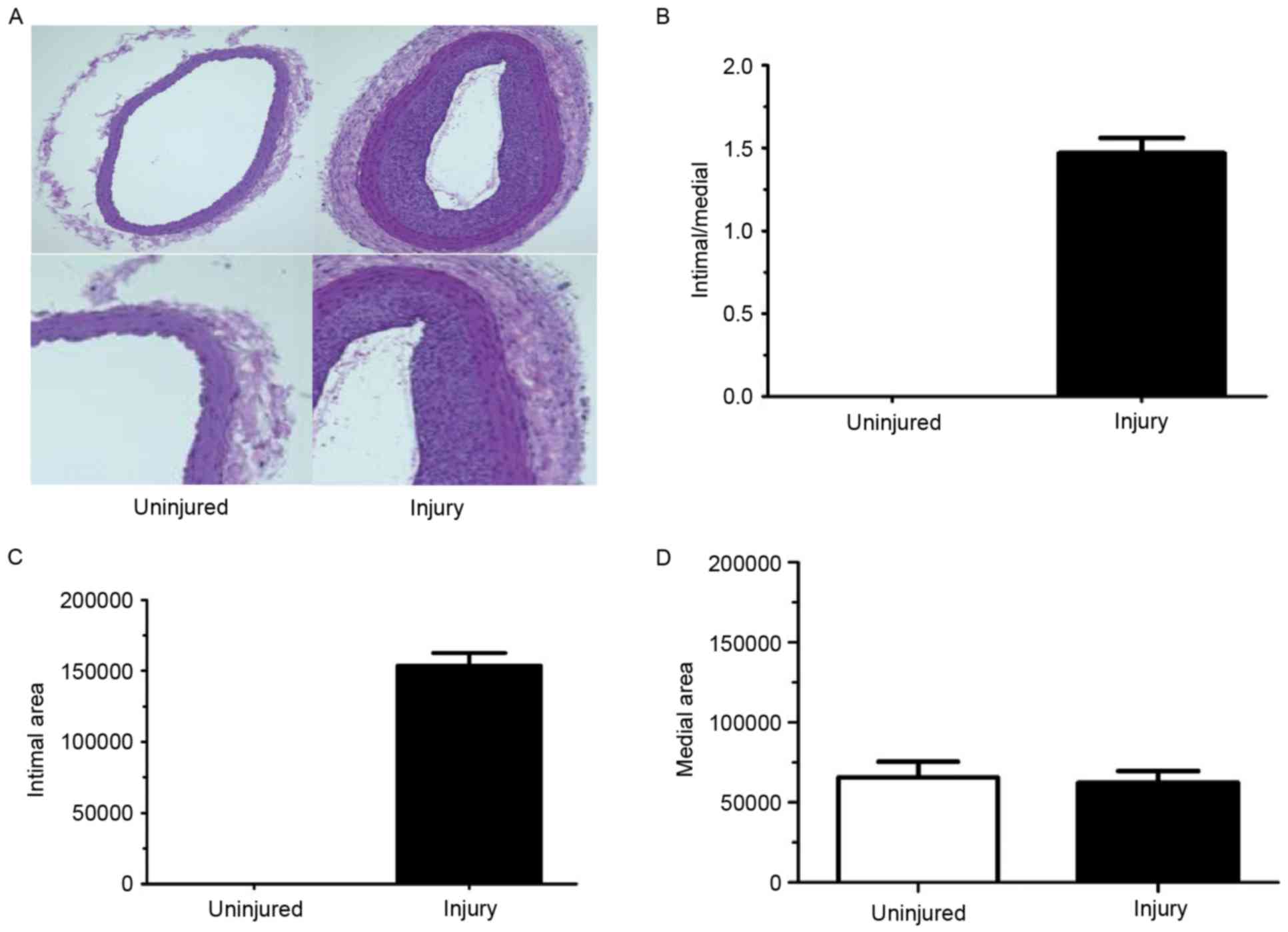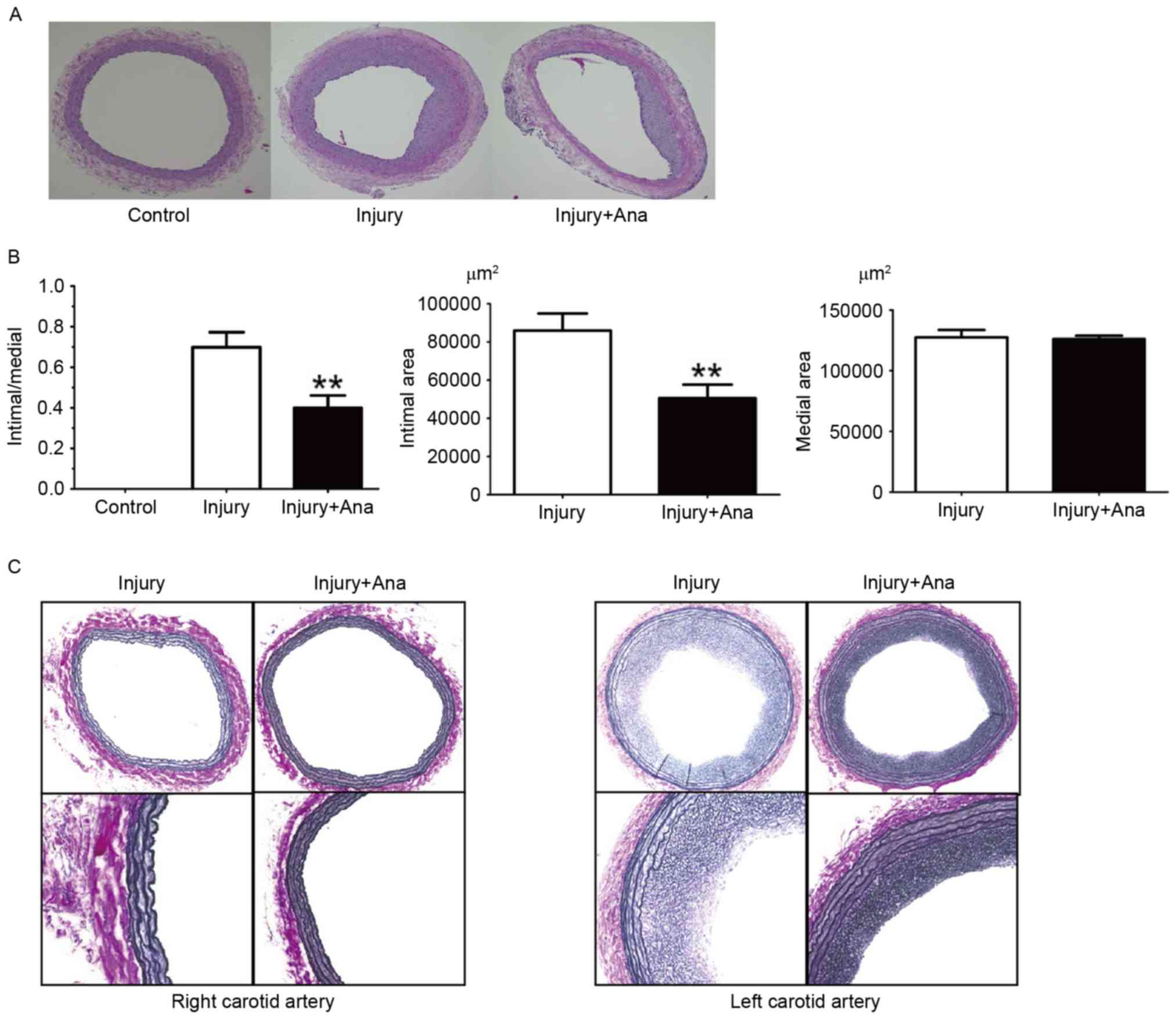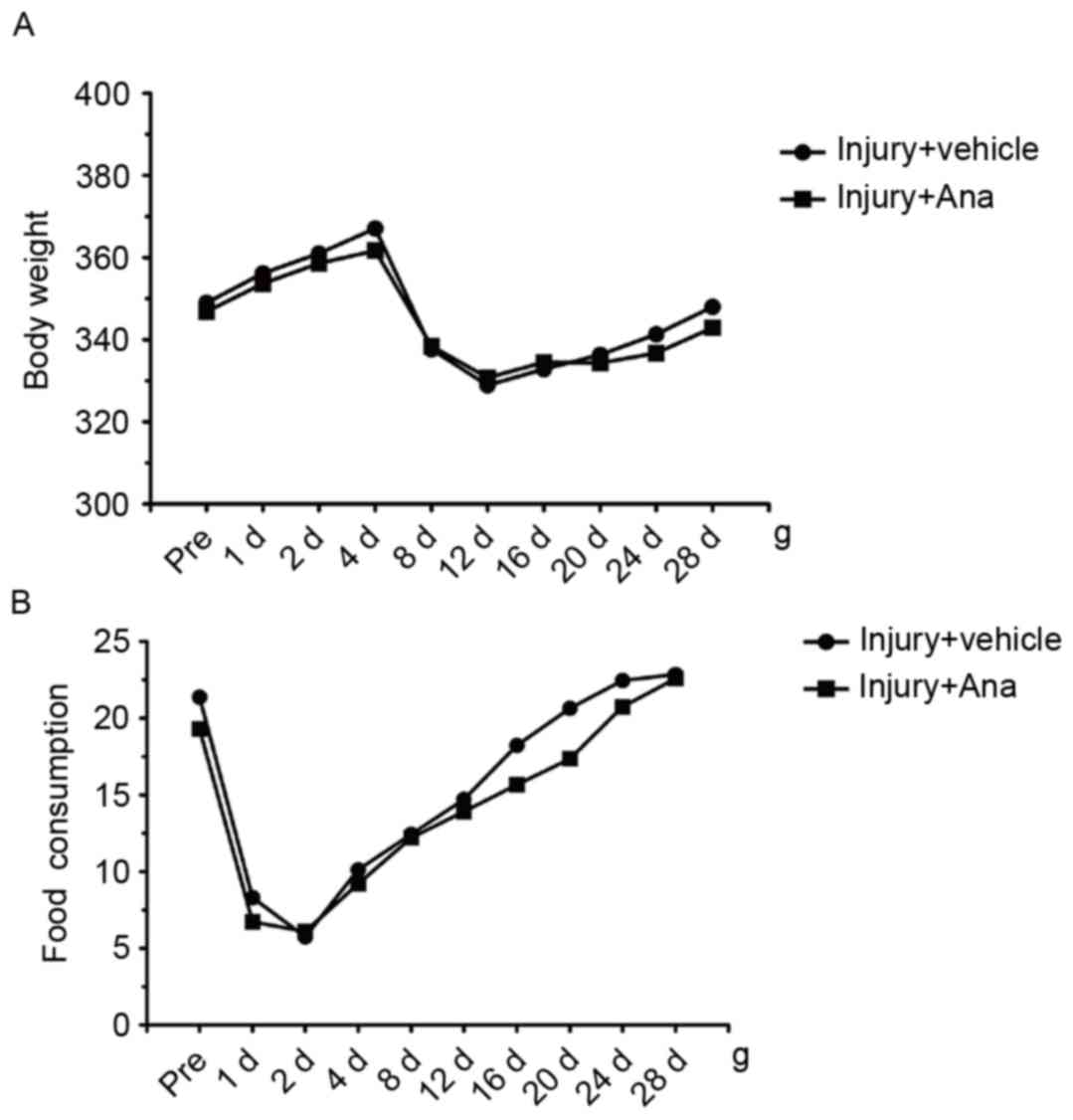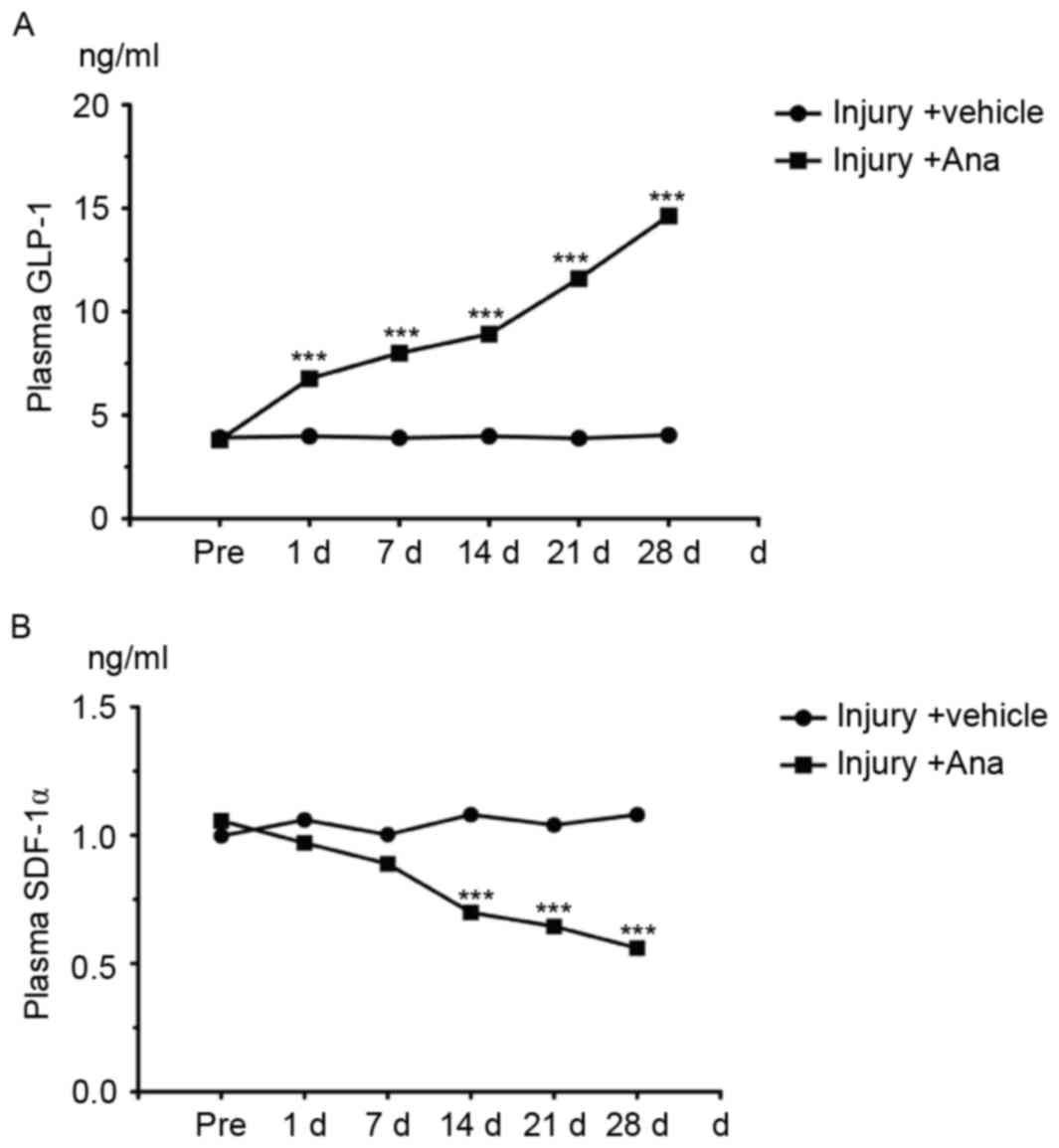|
1
|
Molina JA and Heng BH: Global trends in
cardiology and cardiothoracic surgery-an opportunity or a threat?
Ann Acad Med Singapore. 38:541–545. 2009.PubMed/NCBI
|
|
2
|
Uchida Y, Uchida Y, Matsuyama A, Koga A,
Kanai M and Sakurai T: Formation of web- and membrane-like
structures on the edges of bare-metal coronary stents. Circ J.
74:1830–1836. 2010. View Article : Google Scholar : PubMed/NCBI
|
|
3
|
Pauletto P, Sartore S and Pessina AC:
Smooth-muscle-cell proliferation and differentiation in neointima
formation and vascular restenosis. Clin Sci (Lond). 87:467–479.
1994. View Article : Google Scholar : PubMed/NCBI
|
|
4
|
Delafontaine P: Growth factors and
vascular smooth muscle cell growth responses. Eur Heart J. 19 Suppl
G:G18–G22. 1998.PubMed/NCBI
|
|
5
|
Ross R: Cell biology of atherosclerosis.
Annu Rev Physiol. 57:791–804. 1995. View Article : Google Scholar : PubMed/NCBI
|
|
6
|
Chervu A and Moore WS: An overview of
intimal hyperplasia. Surg Gynecol Obstet. 171:433–447.
1990.PubMed/NCBI
|
|
7
|
Allaire E and Clowes AW: Endothelial cell
injury in cardiovascular surgery: The intimal hyperplastic
response. Ann Thorac Surg. 63:582–591. 1997.PubMed/NCBI
|
|
8
|
Hong WJ, Petell JK, Swank D, Sanford J,
Hixson DC and Doyle D: Expression of dipeptidyl peptidase IV in rat
tissues is mainly regulated at the mRNA levels. Exp Cell Res.
182:256–266. 1989. View Article : Google Scholar : PubMed/NCBI
|
|
9
|
Matheeussen V, Baerts L, de Meyer G, de
Keulenaer G, van der Veken P, Augustyns K, Dubois V, Scharpé S and
De Meestre I: Expression and spatial heterogeneity of dipeptidyl
peptidases in endothelial cells of conduct vessels and capillaries.
Biol Chem. 392:189–198. 2011. View Article : Google Scholar : PubMed/NCBI
|
|
10
|
Shinjo T, Nakatsu Y, Iwashita M, Sano T,
Sakoda H, Ishihara H, Kushiyama A, Fujishiro M, Nishimura F and
Asano T: High-fat diet feeding significantly attenuates
anagliptin-induced regeneration of islets of Langerhans in
streptozotocin-induced diabetic mice. Diabetol Metab Syndr.
7:502015. View Article : Google Scholar : PubMed/NCBI
|
|
11
|
Ervinna N, Mita T, Yasunari E, Azuma K,
Tanaka R, Fujimura S, Sukmawati D, Nomiyama T, Kanazawa A, Kawamori
R, et al: Anagliptin, a DPP-4 inhibitor, suppresses proliferation
of vascular smooth muscles and monocyte inflammatory reaction and
attenuates atherosclerosis in male apo E-deficient mice.
Endocrinology. 154:1260–1270. 2013. View Article : Google Scholar : PubMed/NCBI
|
|
12
|
Hirano T, Yamashita S, Takahashi M,
Hashimoto H, Mori Y and Goto M: Anagliptin, a dipeptidyl
peptidase-4 inhibitor, decreases macrophage infiltration and
suppresses atherosclerosis in aortic and coronary arteries in
cholesterol-fed rabbits. Metabolism. 65:893–903. 2016. View Article : Google Scholar : PubMed/NCBI
|
|
13
|
Indolfi C, Pavia M and Angelillo IF:
Drug-eluting stents versus bare metal stents in percutaneous
coronary interventions (a meta-analysis). Am J Cardiol.
95:1146–1152. 2005. View Article : Google Scholar : PubMed/NCBI
|
|
14
|
Cassess S, Hoppmann P, Kufner S, Byrne RA,
Wiebe J, Colleran R, Giacoppo D, Harada Y, Laugwitz KL, Schunkert
H, et al: Intraindividual comparison of everolimus eluting
bioresorbable vascular scaffolds versus drug eluting metallic
stent. Circ Cardiovasc Interv. 9:pii: e0036982016. View Article : Google Scholar
|
|
15
|
Allagnat F, Dubuis C, Lambelet M, Le Gal
L, Alonso F, Corpataux JM, Déglise S and Haefliger JA: Connexin37
reduces smooth muscle cell proliferation and intimal hyperplasia in
a mouse model of carotid artery ligation. Cardiovasc Res.
113:805–816. 2017. View Article : Google Scholar : PubMed/NCBI
|
|
16
|
Zhang Y, He X, Chen X, Ma H, Liu D, Luo J,
Du Z, Jin Y, Xiong Y, He J, et al: Enhanced external
counterpulsation inhibits intimal hyperplasia by modifing shear
stress responsive gene expression in hypercholesterolemic pigs.
Circulation. 116:526–534. 2007. View Article : Google Scholar : PubMed/NCBI
|
|
17
|
Davies MG and Hagen PO: The vascular
endothelium. A new horizon. Ann Surg. 218:593–609. 1993. View Article : Google Scholar : PubMed/NCBI
|
|
18
|
Kibos A, Campeanu A and Tintoiu I:
Pathophysiology of coronary artery in-stent restenosis. Acute Card
Care. 9:111–119. 2007. View Article : Google Scholar : PubMed/NCBI
|
|
19
|
Yoneda S, Abe S, Kanaya T, Oda K, Nishino
S, Kageyama M, Taguchi I, Masawa N and Inoue T: Late-phase
inflammatory response as a feature of in-stent restenosis after
drug-eluting stent implantation. Coron Artery Dis. 24:368–373.
2013. View Article : Google Scholar : PubMed/NCBI
|
|
20
|
McDonald RA, Halliday CA, Miller AM, Diver
LA, Dakin RS, Montgomery J, McBride MW, Kennedy S, McClure JD,
Robertson KE, et al: Reducing in-stent restenosis: Therapeutic
manipulation of miRNA in vascular remodeling and inflammation. J Am
Coll Cardiol. 65:2314–2327. 2015. View Article : Google Scholar : PubMed/NCBI
|
|
21
|
Paneghetti L and Ng YS: A novel
endothelial-derived anti-inflammatory activity significantly
inhibits spontaneous choroidal neovascularisation in a mouse model.
Vasc Cell. 8:22016. View Article : Google Scholar : PubMed/NCBI
|
|
22
|
Jiang W, Zheng B, Zhang XH, Yue LY, Liu C,
Ma D, Yang Z and Wen JK: Tongxinluo inhibits neointimal formation
by regulationg the expression and post-translational modification
of KLF5 in macrophages. Am J Transl Res. 8:4778–4790.
2016.PubMed/NCBI
|
|
23
|
Zhang YQ, Tian F, Zhou Y, Chen YD, Li B,
Ma Q and Zhang Y: Nicorandil attenuates carotid intimal hyperplasia
after balloon catheter injury in diabetic rats. Cardiovasc
Diabetol. 15:622016. View Article : Google Scholar : PubMed/NCBI
|
|
24
|
Grus T, Lambert L, Matěcha J, Grusová G,
Špaček M and Mlček M: The ratio of diameters between the target
artery and the bypass modifies hemodynamic parameters related to
intimal hyperplasia in the distal end to side anastomosis. Physiol
Res. 65:901–908. 2016.PubMed/NCBI
|
|
25
|
Honda Y, Kitano T, Fukuya F, Sato Y, Iwama
S, Morie T and Notake M: A novel alphavbeta3 integrin antagonist
suppresses neointima formation for more than 4 weeks after balloon
injury in rats. Arterioscler Thromb Vasc Biol. 25:1376–1382. 2005.
View Article : Google Scholar : PubMed/NCBI
|
|
26
|
Touchard AG and Schwartz RS: Preclinical
restenosis models: Challenges and successes. Toxicol Pathol.
34:11–18. 2006. View Article : Google Scholar : PubMed/NCBI
|
|
27
|
Shinjo T, Nakatus Y, Iwashita M, Sano T,
Sakoda H, Ishihara H, Kushiyama A, Fujishiro M, Nishimura F and
Asano T: High-fat diet feeding significantly attenuates
anagliptin-induced regeneration of islets of Langerhans in
streptozotocin-induced diabetic mice. Diabetol Metab Syndr.
7:502015. View Article : Google Scholar : PubMed/NCBI
|
|
28
|
Lim S, Choi SH, Shin H, Cho BJ, Park HS,
Ahn BY, Kang SM, Yoon JW, Jang HC, Kim YB and Park KS: Effect of a
dipeptidyl peptidase-IV inhibitor, des-fluoro-sitagliptin, on
neointimal formation after balloon injury in rats. PLoS One.
7:e350072012. View Article : Google Scholar : PubMed/NCBI
|
|
29
|
Eom YS, Gwon AR, Kwak KM, Kim JY, Yu SH,
Lee S, Kim YS, Park IB, Kim KW, Lee K and Kim BJ: Protective
effects of vildagliptin against pioglitazone induced bone loss in
type 2 diabetic rat. PLoS One. 11:e01685692016. View Article : Google Scholar : PubMed/NCBI
|
|
30
|
Mentlein R: Dipeptidyl peptidase IV
(CD26)-role in the inactivation of regulatory peptides. Regul Pept.
85:9–24. 1999. View Article : Google Scholar : PubMed/NCBI
|
|
31
|
Tachibana K, Hirota S, Iizasa H, Yoshida
H, Kawabata K, Kataoka Y, Kitamura Y, Matsushima K, Yoshida N,
Nishikawa S, et al: The chemokine receptor CXCR4 is essential for
vascularization of the gastrointestinal tract. Nature. 393:591–594.
1998. View Article : Google Scholar : PubMed/NCBI
|
|
32
|
Abi-Younes S, Sauty A, Mach F, Sukhova GK,
Libby P and Luster AD: The stromal cell-derived factor-1 chemokine
is a potent platelet agonist highly expressed in atherosclerotic
plaques. Circ Res. 86:131–138. 2000. View Article : Google Scholar : PubMed/NCBI
|
|
33
|
Shirozu M, Nakano T, Inazawa J, Tashiro K,
Tada H, Shinohara T and Honji T: Structure and chromosomal
localization of the human stromal cell-derived factor 1 (SDF1)
gene. Genomics. 28:495–500. 1995. View Article : Google Scholar : PubMed/NCBI
|
|
34
|
Shioda T, Kato H, Ohnishi Y, Tashiro K,
Ikegawa M, Nakayama EE, Hu H, Kato A, Sakai Y, Liu H, et al:
Anti-HIV-1 and chemotactic activities of human stromal cell-derived
factor 1alpha (SDF-1alpha) and SDF-1beta are abolished by
CD26/dipeptidyl peptidase IV-mediated cleavage. Proc Natl Acad Sci
USA. 95:pp. 6331–6336. 1998; View Article : Google Scholar : PubMed/NCBI
|
|
35
|
Schober A, Knarren S, Lietz M, Lin EA and
Weber C: Crucial role of stromal cell-derived factor-1alpha in
neointima formation after vascular injury in apolipoprotein
E-deficient mice. Circulation. 108:2491–2497. 2003. View Article : Google Scholar : PubMed/NCBI
|
|
36
|
Ervinna N, Mita T, Yasunari E, Azuma K,
Tanaka R, Fujimura S, Sukmawati D, Nomiyama T, Kanazawa A, Kawamori
R, et al: Anagliptin, a DPP-4 inhibitor, suppresses proliferation
of vascular smooth muscles and monocyte inflammatory reaction and
attenuates atherosclerosis in male apo E-deficient mice.
Endocrinology. 153:1260–1270. 2013. View Article : Google Scholar
|
|
37
|
Lambeir AM, Durinx C, Scharpe S and De
Meester I: Dipeptidyl-peptidase IV from bench to bedside: An update
on structural properties, functions, and clinical aspects of the
enzyme DPP IV. Crit Rev Clin Lab Sci. 40:209–294. 2003. View Article : Google Scholar : PubMed/NCBI
|
|
38
|
Gorrell MD, Gysbers V and McCaughan GW:
CD26: A multifunctional integral membrane and secreted protein of
activated lymphocytes. Scand J Immunol. 54:249–264. 2001.
View Article : Google Scholar : PubMed/NCBI
|
|
39
|
Zernecke A, Schober A, Bot I, Von
Hundelshausen P, Liehn EA, Möpps B, Mericskay M, Gierschik P,
Biessen EA and Weber C: SDF-1alpha/CXCR4 axis is instrumental in
neointimal hyperplasia and recruitment of smooth muscle progenitor
cells. Circ Res. 96:784–791. 2005. View Article : Google Scholar : PubMed/NCBI
|
|
40
|
Akita K, Isoda K, Shimada K and Daida H:
Dipeptidyl-Peptidase-4 inhibitor, alogliptin, attenuates arterial
inflammation and neointimal formation after injury in low-density
lipoprotein (LDL) receptor-deficient mice. J Am Heart Assoc.
4:e0014692015. View Article : Google Scholar : PubMed/NCBI
|
|
41
|
Lamers D, Famulla S, Wronkowitz N, Hartwig
S, Lehr S, Ouwens DM, Eckardt K, Kaufman JM, Ryden M, Müller S, et
al: Dipeptidyl peptidase 4 is a novel adipokine potentially linking
obesity to the metabolic syndrome. Diabetes. 60:1917–1925. 2011.
View Article : Google Scholar : PubMed/NCBI
|
|
42
|
Murohara T: Dipeptidyl peptidase-4
inhibitor: Another player for cardiovascular protection. J Am Coll
Cardiol. 59:277–279. 2012. View Article : Google Scholar : PubMed/NCBI
|














